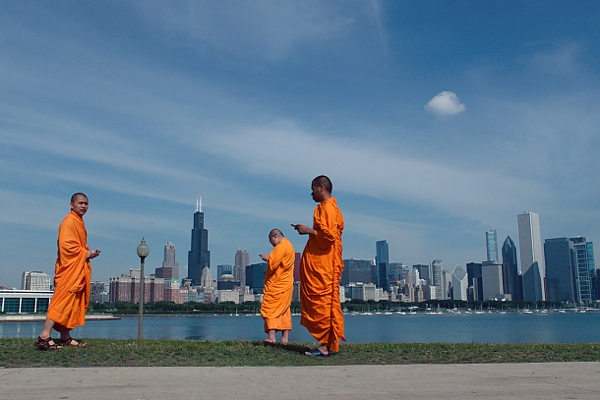Movie review by Greg Carlson
Werner Herzog shares another meditation on humanity in “Lo and Behold: Reveries of the Connected World.” Lit with the master filmmaker’s blazing curiosity, the fascinating documentary ponders a wide variety of digital era conundrums and curiosities via ten chapters. Bouncing from topic to topic, “Lo and Behold” accomplishes the showman’s trick that leaves the audience salivating for more – many of the sections could sustain feature length examinations on their own. From our dependence on the electronic infrastructure that could be wiped out by human error, hacker malfeasance, or solar activity, to the scary eventualities surrounding the self-awareness that will accompany artificial intelligence, Herzog knows how to ask questions that simultaneously fascinate, delight, and terrify.
In the film’s most harrowing sequence, the family members of Nikki Catsouras – a young woman who died in a car wreck in 2006 – recount the shocking and unconscionable anonymous online harassment they faced when trolls began sharing, posting, and emailing crash site images that had been taken by California Highway Patrol officers. The Catsouras case, which attracted national attention when the family sued the CHP, continues to illuminate and inform the parameters of speech, personal expression, and First Amendment protections in virtual space. Herzog knows that he cannot possibly arrive at an answer.
Herzog’s respectful inquisitiveness elicits some terrific responses from many of the colorful characters represented on camera. The subjects include a higher than normal percentage of unbelievably intelligent respondents, but Herzog’s warm sense of egalitarianism extends to those who do not hold advanced degrees on complex matters. For example, the typically skeptical filmmaker shows compassion for Internet addicts, and a sequence in which we visit a community of people physically affected by electromagnetic radiation is so expertly constructed, you find yourself envying the cellular phone-free lifestyle made possible by the legal restrictions of the National Radio Quiet Zone.
While the inhabitants of Green Bank, West Virginia live under tech-restricted conditions for their health if not for their ideological beliefs, many of the movie’s thinkers have developed relationships to computing, robotics, and theoretical physics that are just as intriguing. Kevin Mitnick breezily describes just how easy it can be to con someone into giving up what should be secure information. Ted Nelson, still youthful in his 70s, makes for the perfect mad scientist/Cassandra mash-up. His incredible vision for creating code that would allow powerful flexibility in linking ideas (and simultaneously organize and store the entirety of the world’s knowledge) makes Google look like a drop in the bucket.
During Herzog’s post-screening discussion at the film’s Sundance world premiere, the director insisted that he was not a journalist. His subsequent thoughts offered insight into his filmmaking technique, especially in the way he approaches on-camera conversations with participants. Echoing some of the movie’s thematic fiber, the presentation included heartfelt pleas for continued critical thinking, even if the next generation of technological unknowns threatens to erase our desire/need to process certain kinds of information with our own brains. “Lo and Behold” certainly dispels the possibility that Herzog is a Luddite tethered to the old-fashioned and the analog (even though he did refer to himself as an anomaly when compared to the percentage of first-time directors presenting at film festivals). Still, it was refreshing when his advice to the cinematically inclined audience was to “Read, read, read, read!”
